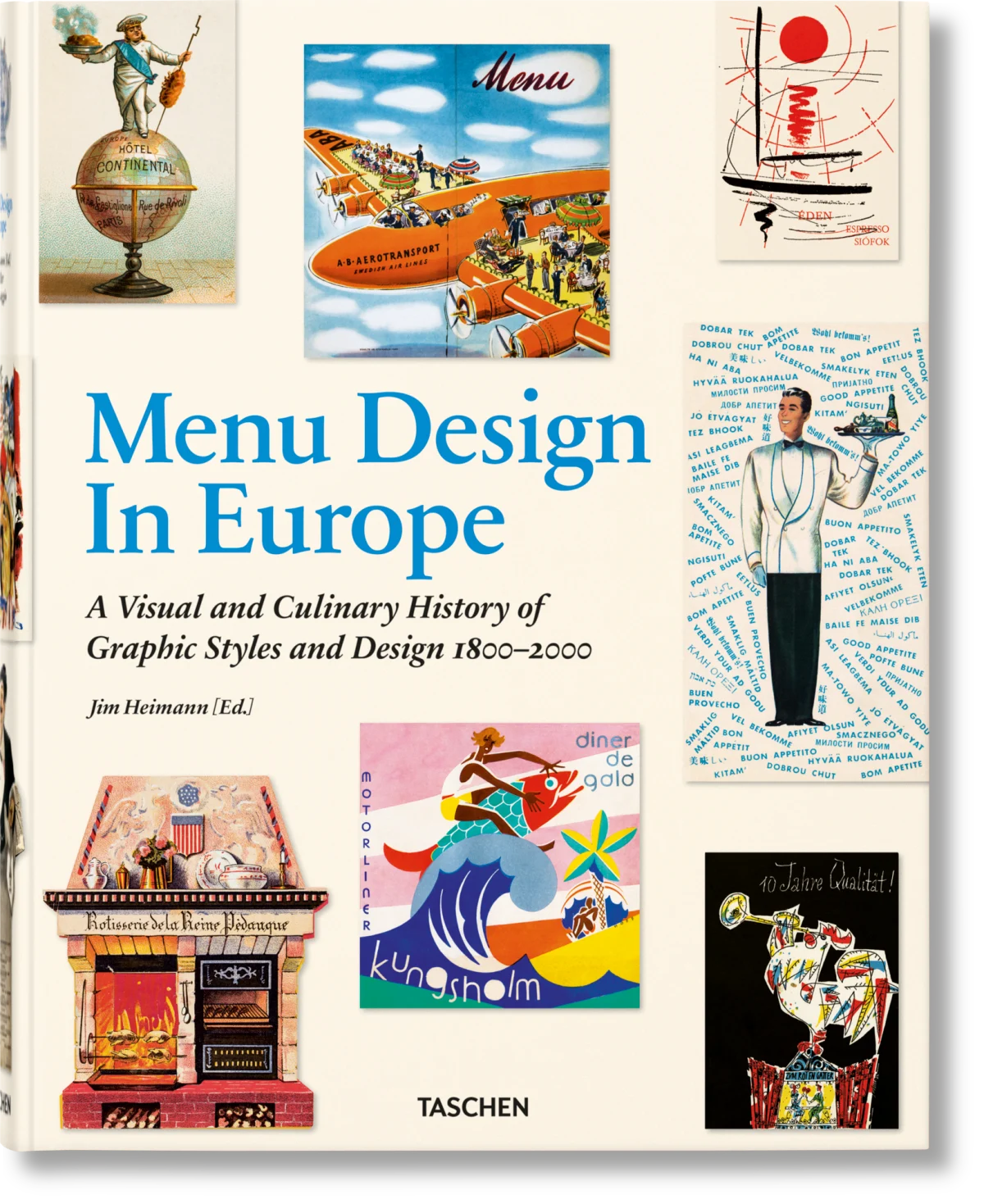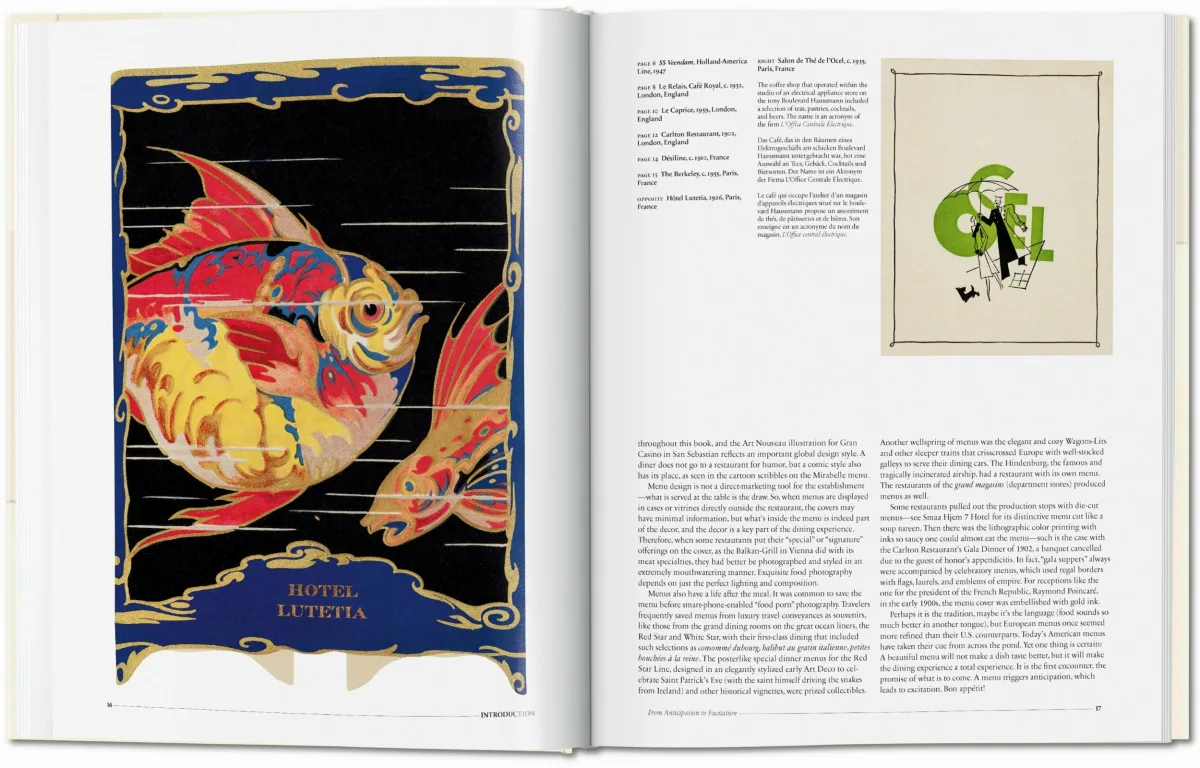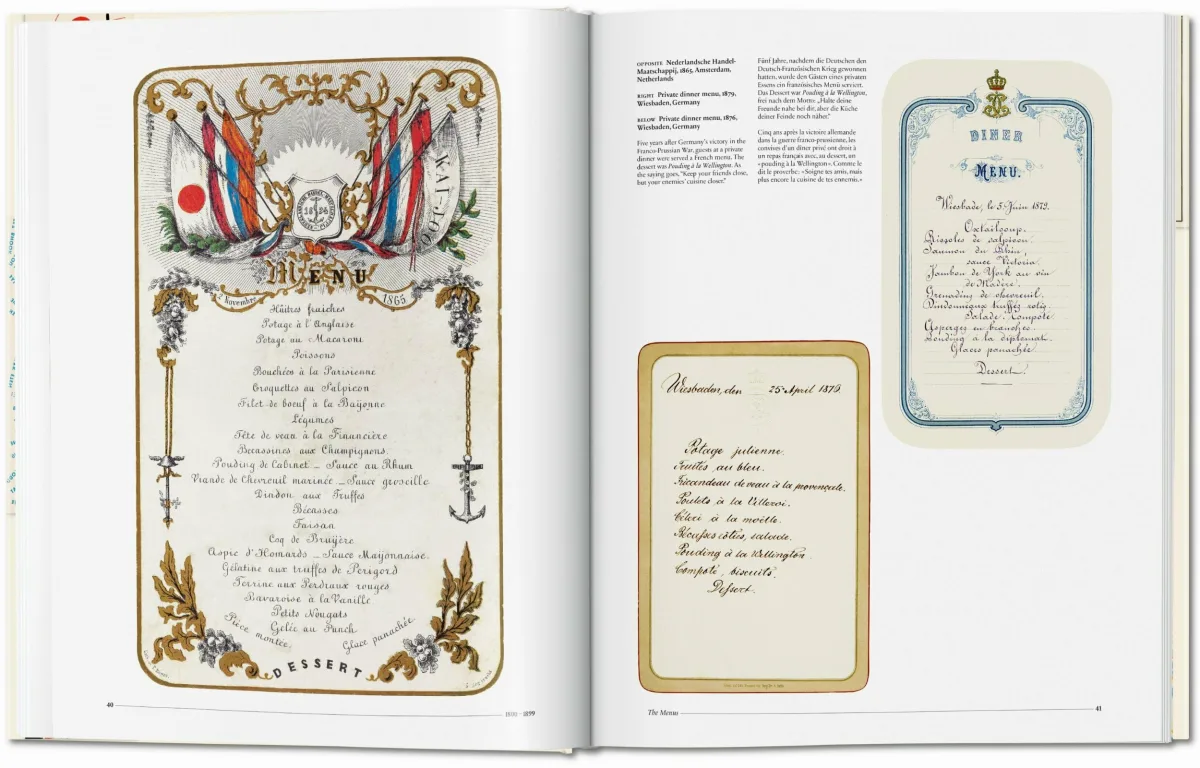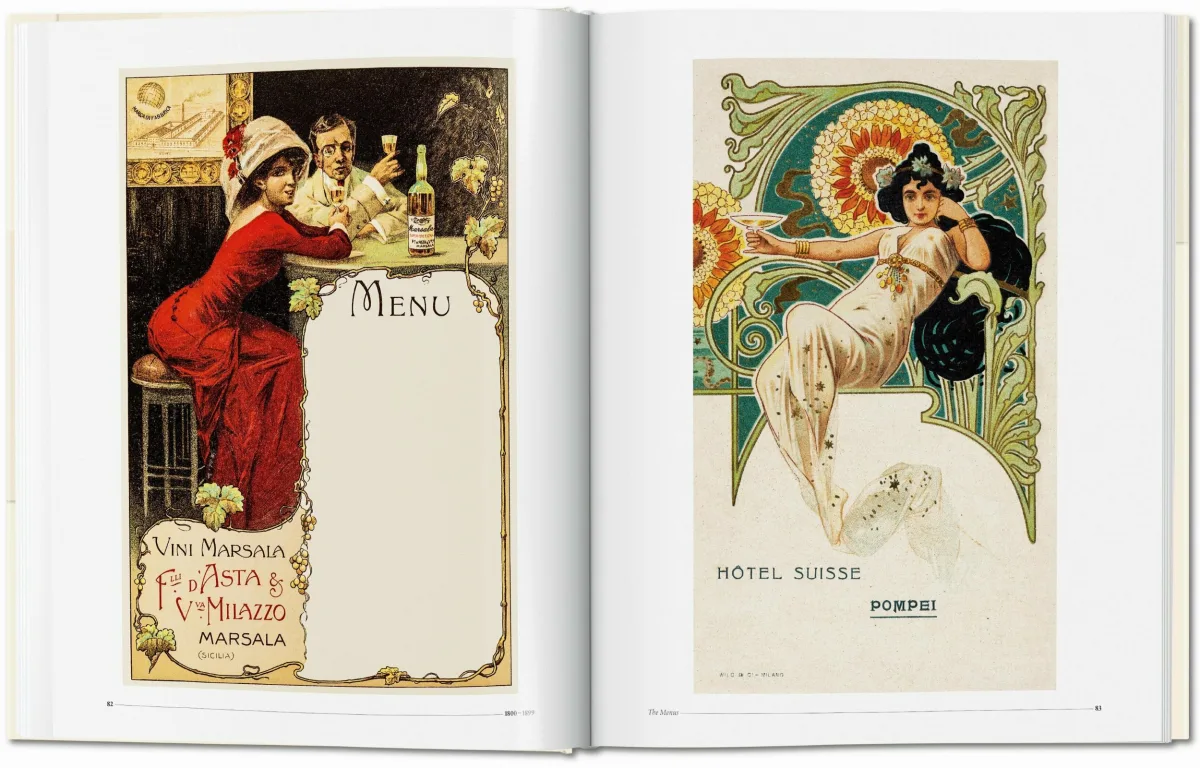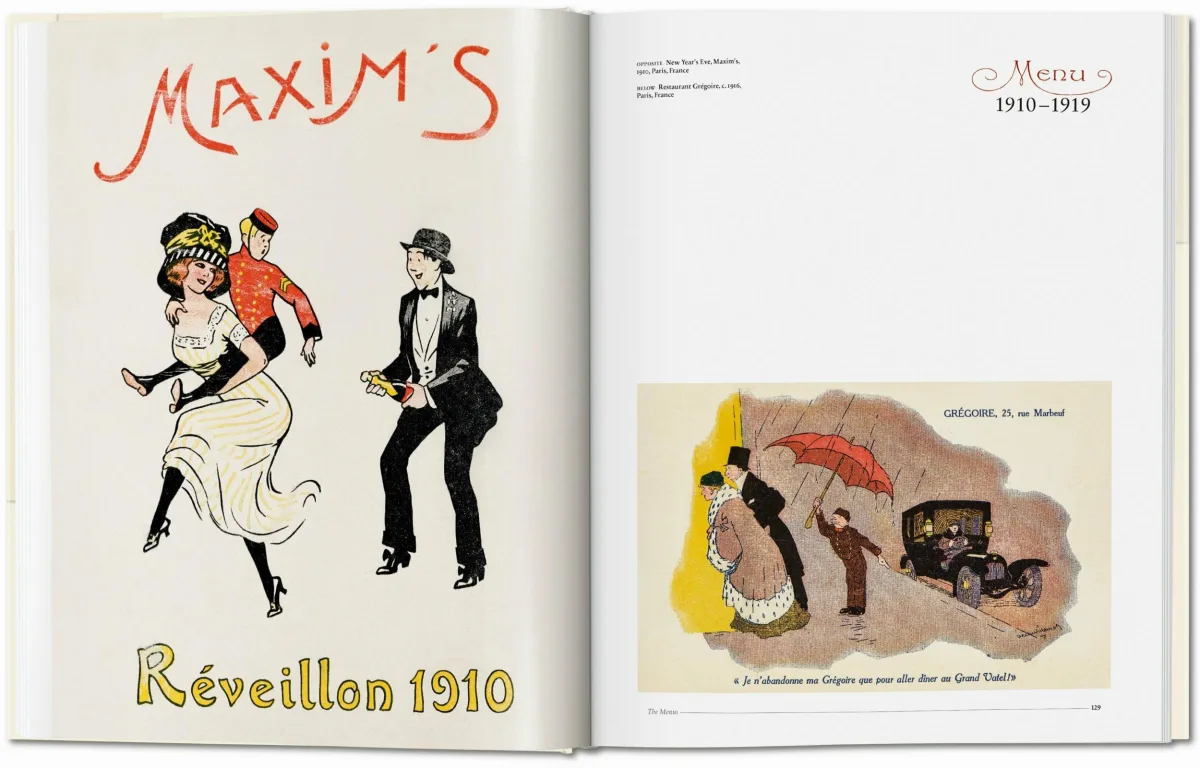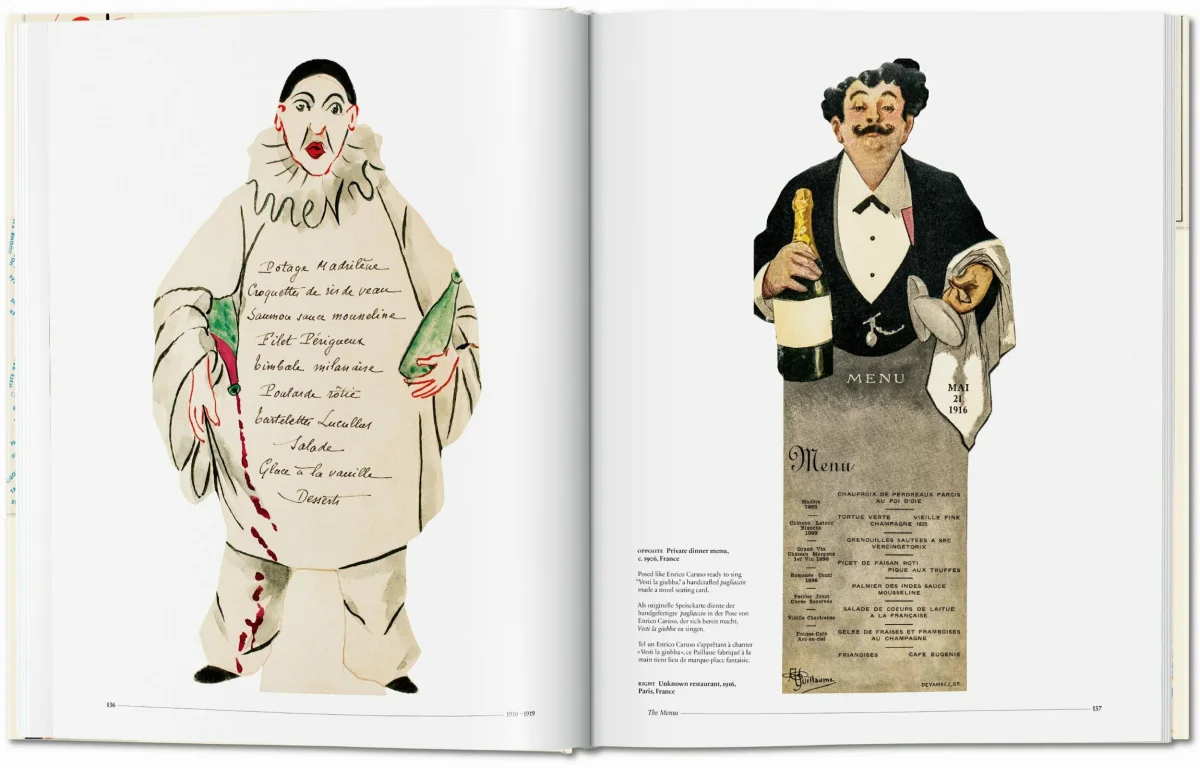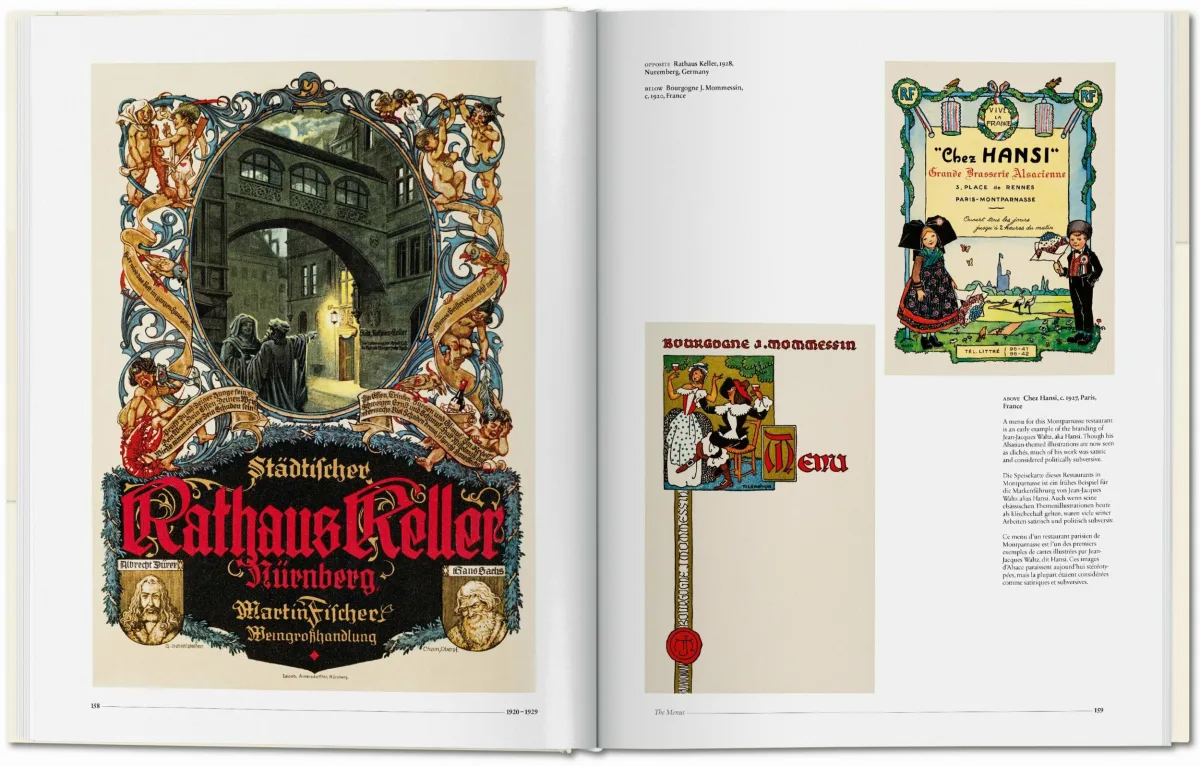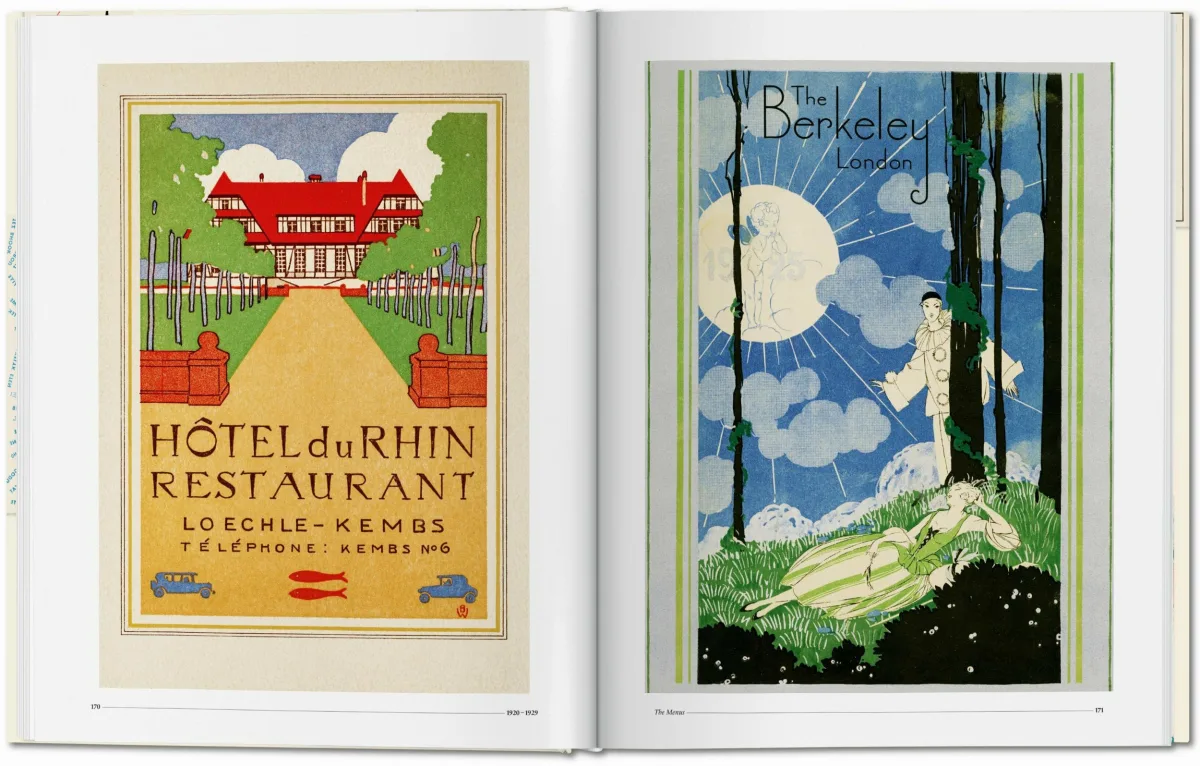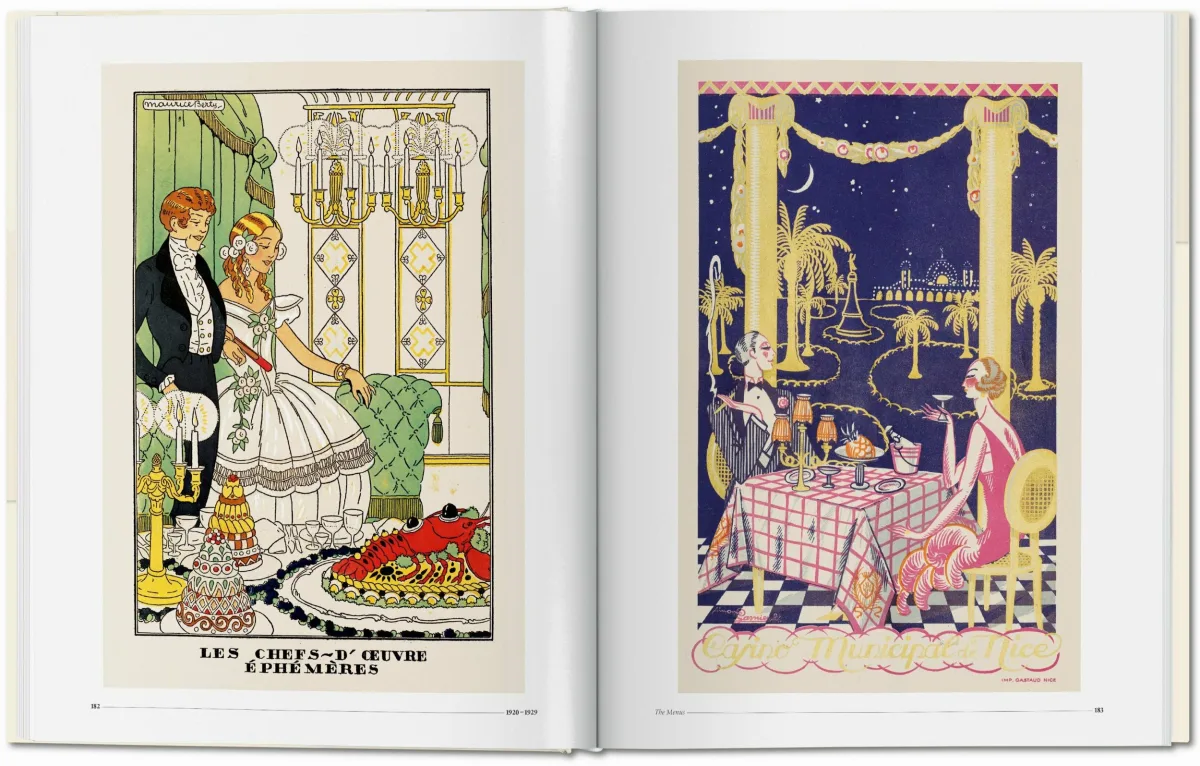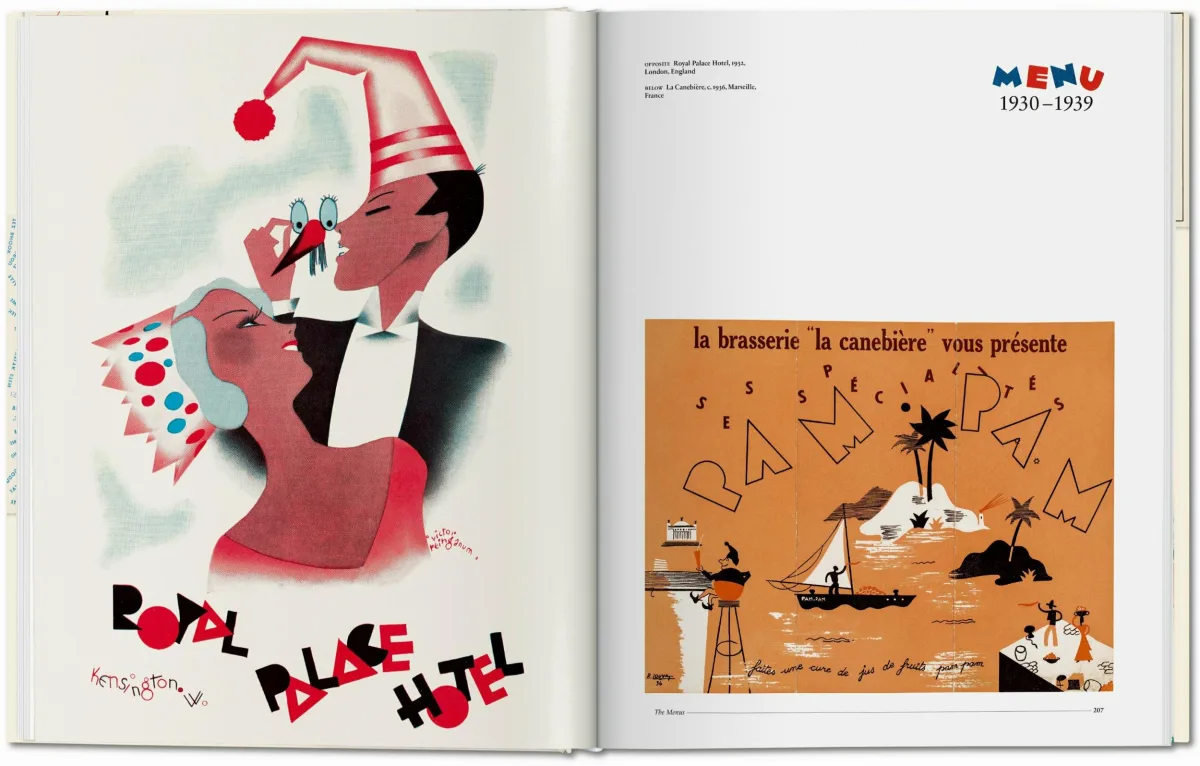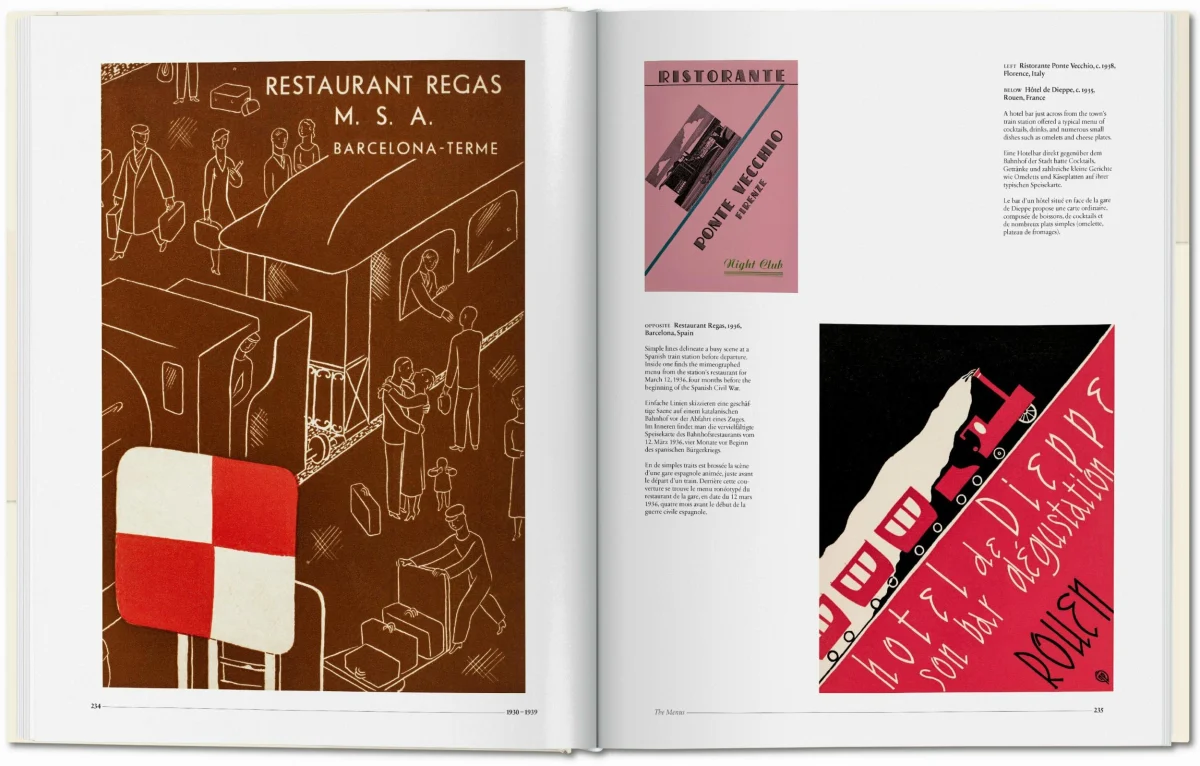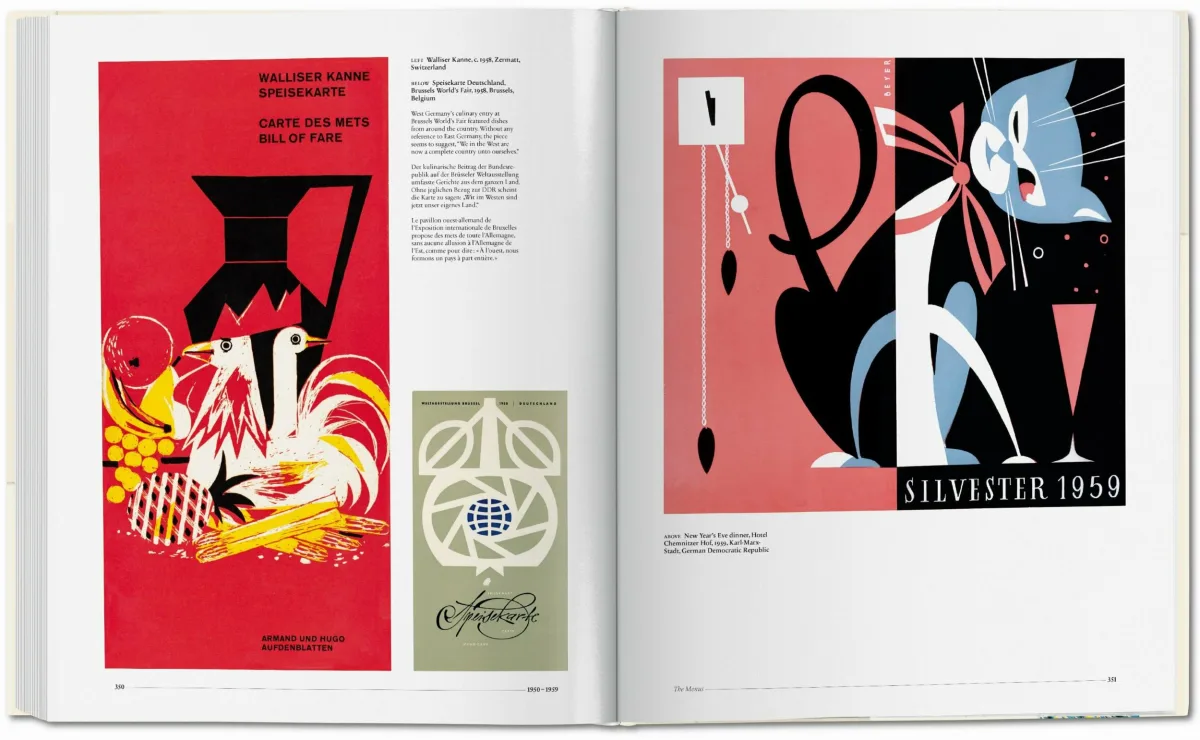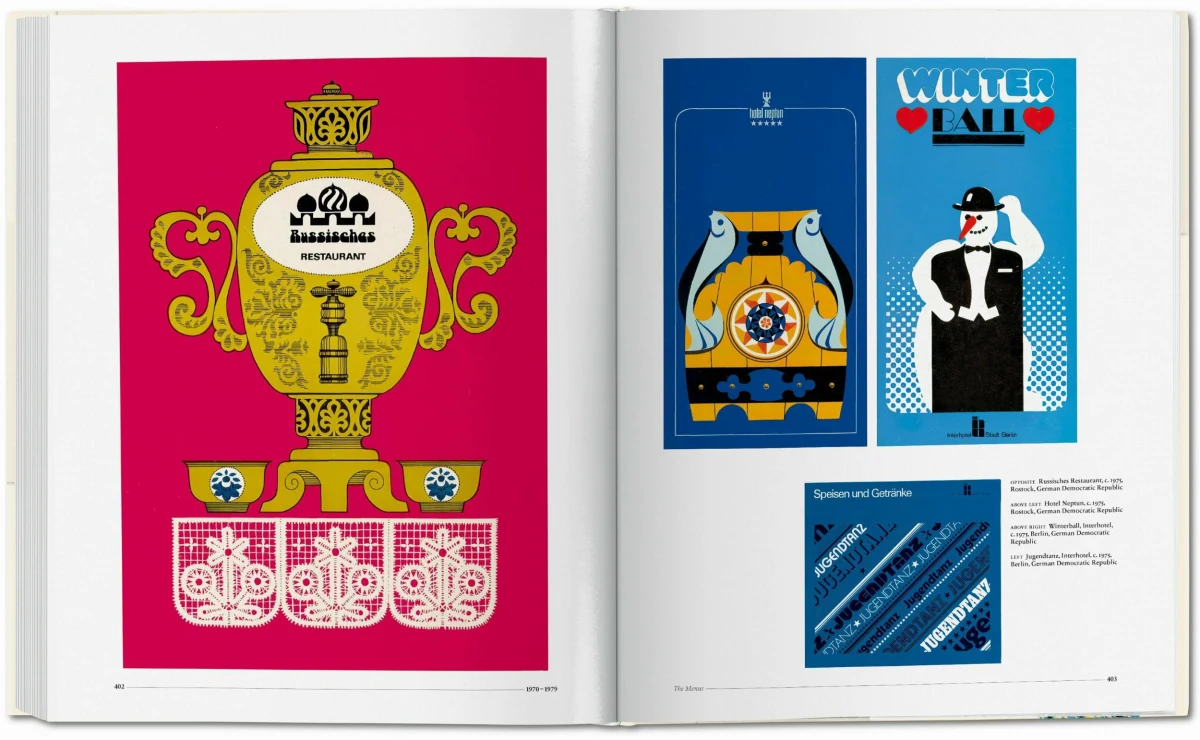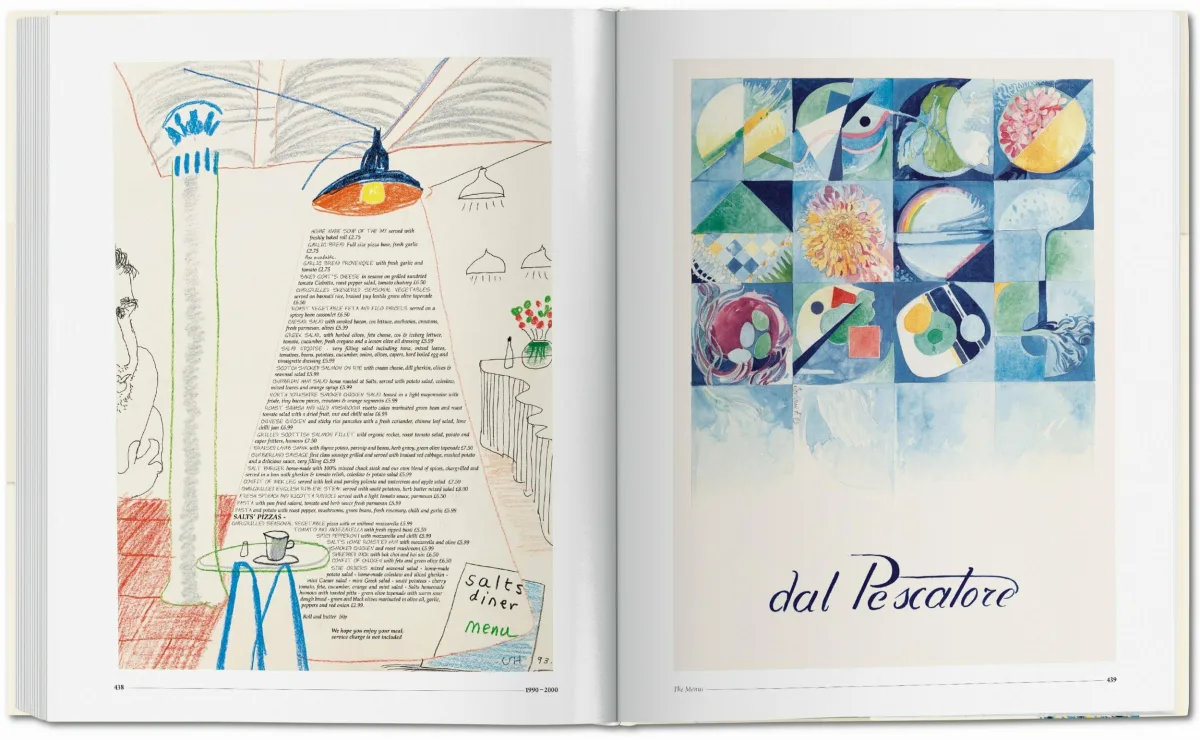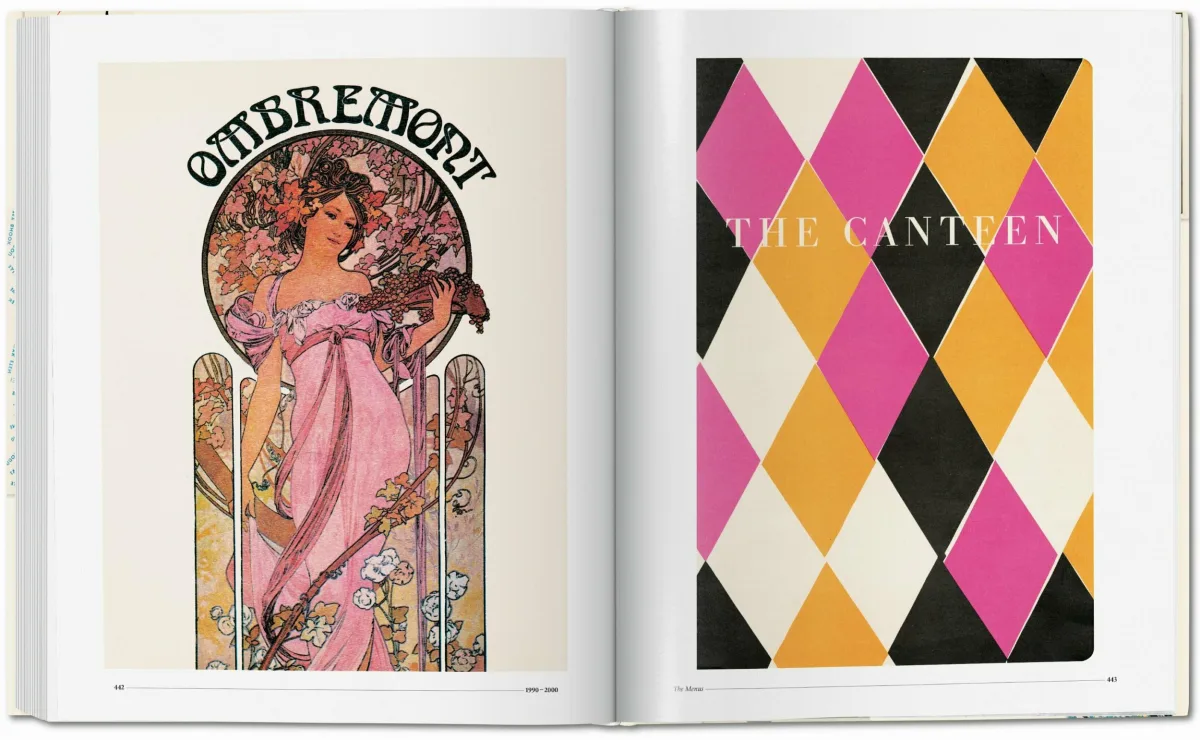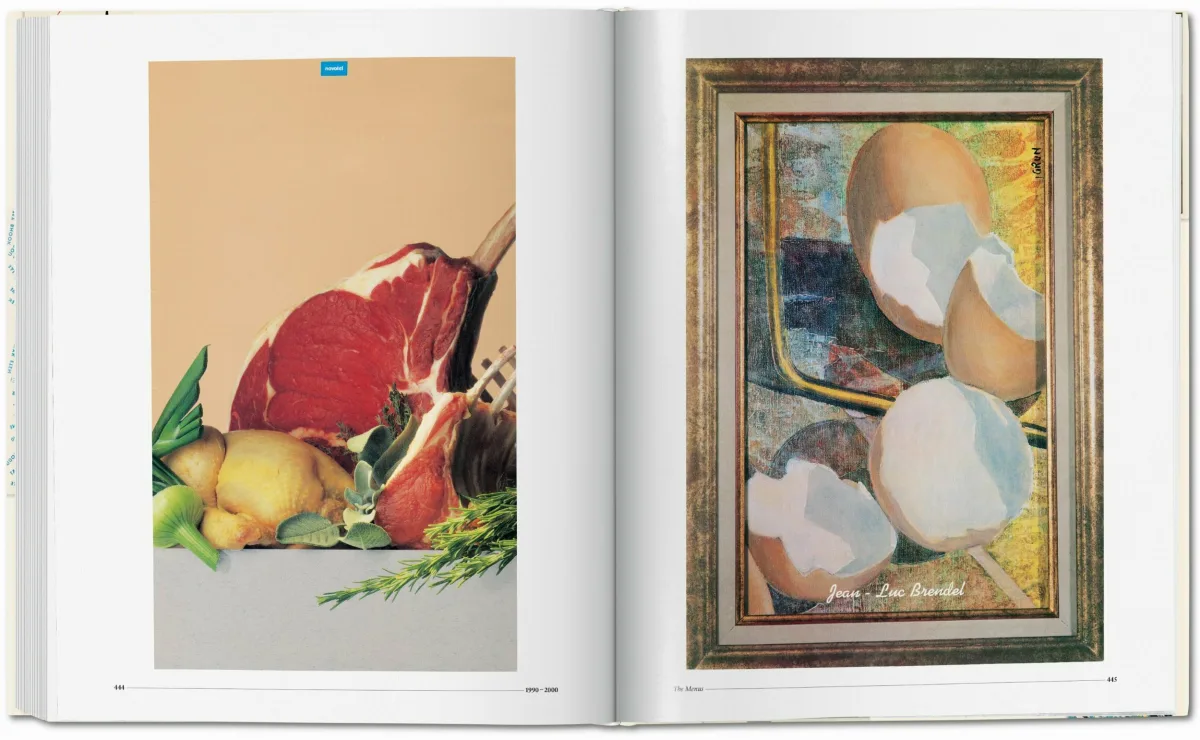1 / 16
Menu Design in Europe
70Edizione: Multilingue (Francese, Inglese, Tedesco)Disponibilità: DisponibileLa reputazione dell'Europa come centro del mondo culinario è confermata da questa vasta gamma di menu di ristoranti di tutto il continente. Dagli esagerati conti dei banchetti reali alle deliziose grafiche minimaliste di metà secolo, le abitudini gastronomiche di decine di Paesi europei sono svelate in questo enciclopedico compendio di design.
Copertina rigida, 9.8 x 12.4 in., 7.71 lb, 448 pagine

Menu Design in Europe
70À la carte European style
A visual and culinary history of graphic styles and design 1800 - 2000
Menu Design in Europe is a mouthwatering feast for the eyes, featuring hundreds of European menus from the early 19th century to the end of the millennium. At once a history of continental cuisine and a sprawling survey of graphic styles, Menu Design in Europe satisfies the craving for foodies and design enthusiasts alike.
The dominance of French cuisine provided the template for the culinary delights that spread throughout (and beyond) the continent. As restaurants and dining experiences increased in the 19th century, the need for a more formal presentation of available items resulted in a range of printed menus that could be both extravagant and simple. The 1891 menu from Paris’s Le Grand Vefour, with its intricate die-cut design, evokes a bustling Belle Epoque bistro, while the 1932 menu from London’s Royal Palace Hotel transports you to the bar at a spirited, Jazz Age nightspot. On the opposite side of the design spectrum, the menu for the mid-century Lasserre restaurant expresses a surrealistic simplicity. A range of stylistic decades is represented, from masterpieces of Art Nouveau and Art Deco to the graphic appropriations of the German Democratic Republic. Also showcased are the Michelin awarded restaurants of the celebrity chef–era and rarities such as a German military menu from World War II.
More than just bills of fare, these menus often represent a memorable dining experience, at times being presented with as much care and attention to detail as the meal itself. So, although one cannot sit in La Tour D’Argent in 1952 and sample its famous duck dish Le Caneton Tour d’Argent, we can surely imagine what it was like when looking at the waterfowl-themed illustration displaying the night’s offerings. Featuring an essay by graphic design historian Steven Heller and captions by ephemerist and antiquarian book dealer Marc Selvaggio, Menu Design In Europe features menus from leading collectors and institutions, providing a sumptuous visual banquet and historical document of two centuries of culinary traditions.
The dominance of French cuisine provided the template for the culinary delights that spread throughout (and beyond) the continent. As restaurants and dining experiences increased in the 19th century, the need for a more formal presentation of available items resulted in a range of printed menus that could be both extravagant and simple. The 1891 menu from Paris’s Le Grand Vefour, with its intricate die-cut design, evokes a bustling Belle Epoque bistro, while the 1932 menu from London’s Royal Palace Hotel transports you to the bar at a spirited, Jazz Age nightspot. On the opposite side of the design spectrum, the menu for the mid-century Lasserre restaurant expresses a surrealistic simplicity. A range of stylistic decades is represented, from masterpieces of Art Nouveau and Art Deco to the graphic appropriations of the German Democratic Republic. Also showcased are the Michelin awarded restaurants of the celebrity chef–era and rarities such as a German military menu from World War II.
More than just bills of fare, these menus often represent a memorable dining experience, at times being presented with as much care and attention to detail as the meal itself. So, although one cannot sit in La Tour D’Argent in 1952 and sample its famous duck dish Le Caneton Tour d’Argent, we can surely imagine what it was like when looking at the waterfowl-themed illustration displaying the night’s offerings. Featuring an essay by graphic design historian Steven Heller and captions by ephemerist and antiquarian book dealer Marc Selvaggio, Menu Design In Europe features menus from leading collectors and institutions, providing a sumptuous visual banquet and historical document of two centuries of culinary traditions.
L'editore
Jim Heimann is the Executive Editor for TASCHEN. A cultural anthropologist, historian, and an avid collector, he has authored numerous titles on architecture, pop culture, and the history of Los Angeles and Hollywood, including TASCHEN’s Surfing, Los Angeles. Portrait of a City, California Crazy, and the All-American Ads series.
L'autore
Steven Heller has produced over 200 books on visual communication and published countless articles in international design magazines. Currently he is cofounder and cochair of the MFA Design program at the School of Visual Arts, New York.
Menu Design in Europe
Copertina rigida, 25 x 31.5 cm, 3.50 kg, 448 pagineISBN 978-3-8365-7873-8
Edizione: Multilingue (Francese, Inglese, Tedesco)Scarica qui le immagini del prodotto
5
Great.
17 aprile 2023
Hi,Great.Thank you very much.Cheers.Super
7 marzo 2023
Bardzo interesujaca książka 😉28 febbraio 2023
lovely book right up my alley
much larger than expected
but great for coffee tableUtterly stunning.
20 novembre 2022
A joyous and permanent addition to your library.Beautiful book, superb reference for designers
3 novembre 2022
I bought this as a source book for graphic design. And am very glad I did. It's very comprehensive with a lot of great images. High quality printing and paper. Worth noting the book is huge, thick, and pretty hefty. You're going to need a big space on a bookshelf.
I just wish the Menus of America book was still in print. Or a paperback version available.
Thus, presumably this book will go out of print soon enough too. Probably best not to hesitate in its purchase.Full size, full color illustrations
24 ottobre 2022
This is a BIG, beautiful book that provides a chronogicic view of european menus for several centuries. Its easy to see progression and contributions by well known artists.
